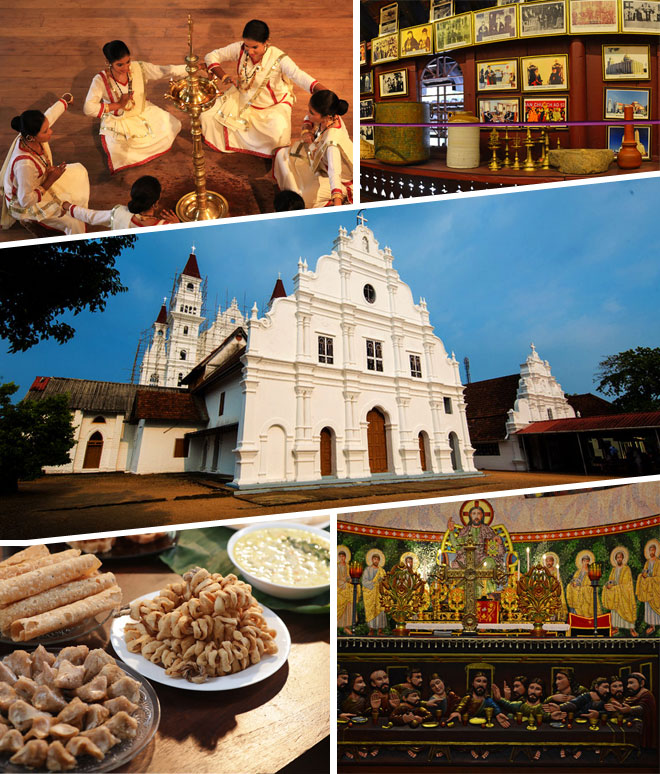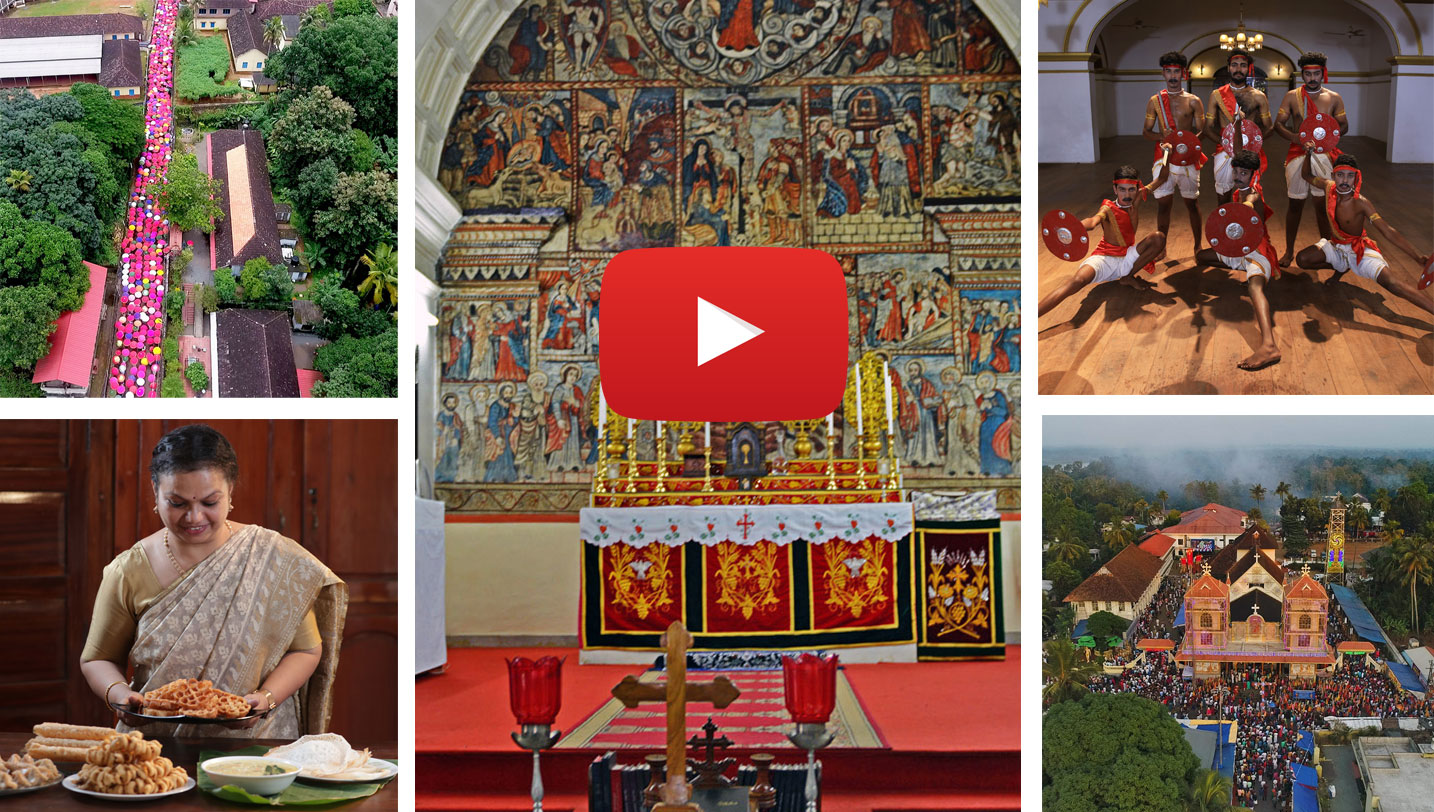St. George Orthodox Church, Cheppad
This church, located between Haripad and Kayamkulam, has a rich legacy of murals. These murals, a part of the Christian art tradition, belong to the pre- Renaissance period and are a blend of Kerala mural art and Persian art. Certain documents say that the church was established in CE 1175. Jornado records Meneses Metropolitan’s visit to this church in connection with the Synod of Diamper. He is described as travelling from Kartikapally to Korikulangara also known as Corico Langre, which was under the King of Panavally and to this famous church there in the name of St. George, the most popular Saint at that time in Kerala. Then it was a Jacobite church. Paulinose Pathiri, in his map Neuste Karte Von Malabar, indicates this location as Codamcullangare and says that it stands on the banks of a river between Chengannur and Kartikapally. This has also been included in the list of churches as Tekan Collangare. Bernard Thoma, in his book Mar Thoma Christians, confirms that the place known by the names Karikulangara, Kuriankulangara and Kuzhiyankulangara, was Cheppad.
Murals at Cheppad:
The murals at Cheppad church are said be 600 years old and are all in the sanctuary. Incidents of the Old and New Testaments, painted with colours drawn from nature, remain spread over 47 columns. The birth of Christ, resurrection of Lazar by Christ, the kiss of Judas, the Last Supper, crucifixion, angels bringing down the body of Christ, and such other moments of the life of Christ are depicted in the murals. The paintings of the expulsion of Adam and Eve from heaven, Noah’s Ark, the mission of St.Thomas, and the picture of Mar Thoma I are also there. Pictures of the ascension of Virgin Mary to heaven and the life of Christ are done in blue and red colours. The Lapis Lazuli used for the blue tint might have been brought here from Damascus by priests ("Ancient murals in Alappuzha Church drawing visitors,’’ The Hindu, March 29, 2013). The picture of Mar Thoma 1 is depicted using the same colours and minerals, in the same style with similar expression and features as in the one at St. George Church, Angamaly, Sabore Afreth Church, Akaparambu, and St. George Church, Cheppad. This portrait might have been copied or drawn by artists who were travellers of a particular period. These are distinct from other pictures of Mar Thoma I. Kerala style has been used in the facial expressions. The presence of the portrait of Mar Thoma I, shows that the murals might not be older than 350 years, for he was ordained after Kunankurissu Sathyam in 1653.
Malankara Bishop Mar Dionysius was laid to rest here. The church museum still cherishes an Ethiopian cross and a Bible written in Ethiopian language Ambaric that were gifted to the church during his birth centenary celebrations in 1955. The museum also keeps a picture of the Ethiopian ruler Hailey Selassie, in memory of his visit to the church. Two statues of Virgin Mary and a silver idol of crucified Christ are also kept in the museum, and not in the church, as idol worship is not practised. A cot of Mar Dionysius, his Nettur box, and his personal belongings are also there at the museum.
- Santa Cruz Basilica
- St. George Orthodox Church, Cheppad
- St. Mary’s Church, Koratty
- St. George Church, Edathua
- St. Thomas Jacobite Church, Mulanthuruthy
- Martha Mariam Church, Kuravilangad
- St. Mary’s Church, Kanjoor
- St. Hormis Church, Angamaly
- Mar Sabor and Mar Proth Church, Akaparambu
- Akaparambu Roman Catholic Church
- St. Antony’s Church, Ollur
- Martha Mariam Chaldean Syrian Cathedral
- Our Lady of Dolours Basilica
- Our Lady of Lourdes Cathedral
- St. Francis Church
- Thekke Palli, Ernakualm
- Infant Jesus Anglo Indian Church
- CSI Immanuel Church
- St. Joseph Seminary Chapel, Mangalapuzha

